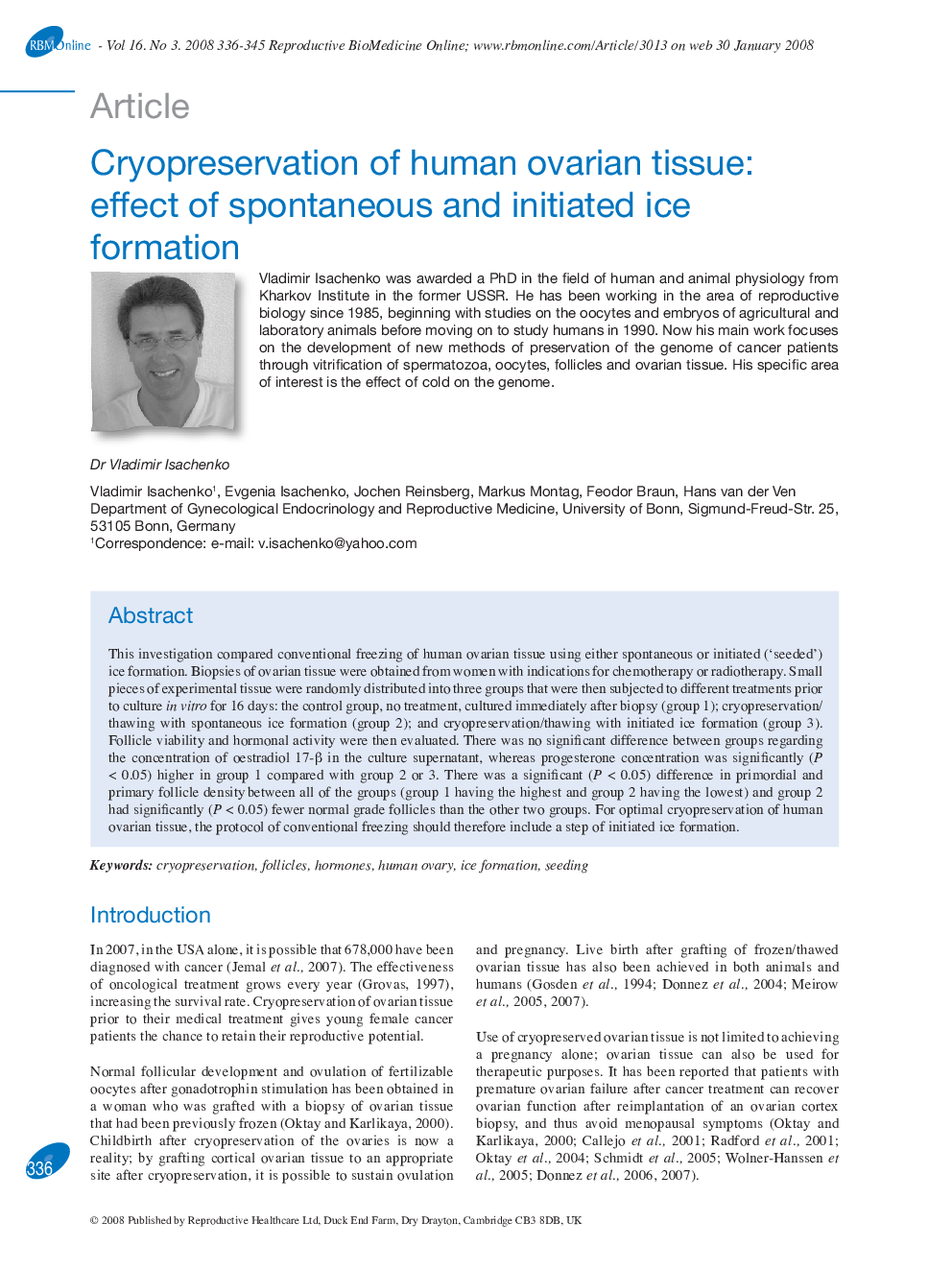| Article ID | Journal | Published Year | Pages | File Type |
|---|---|---|---|---|
| 3972748 | Reproductive BioMedicine Online | 2008 | 10 Pages |
This investigation compared conventional freezing of human ovarian tissue using either spontaneous or initiated (‘seeded’) ice formation. Biopsies of ovarian tissue were obtained from women with indications for chemotherapy or radiotherapy. Small pieces of experimental tissue were randomly distributed into three groups that were then subjected to different treatments prior to culture in vitro for 16 days: the control group, no treatment, cultured immediately after biopsy (group 1); cryopreservation/thawing with spontaneous ice formation (group 2); and cryopreservation/thawing with initiated ice formation (group 3). Follicle viability and hormonal activity were then evaluated. There was no significant difference between groups regarding the concentration of oestradiol 17-β in the culture supernatant, whereas progesterone concentration was significantly (P < 0.05) higher in group 1 compared with group 2 or 3. There was a significant (P < 0.05) difference in primordial and primary follicle density between all of the groups (group 1 having the highest and group 2 having the lowest) and group 2 had significantly (P < 0.05) fewer normal grade follicles than the other two groups. For optimal cryopreservation of human ovarian tissue, the protocol of conventional freezing should therefore include a step of initiated ice formation.
